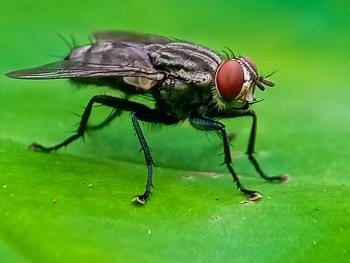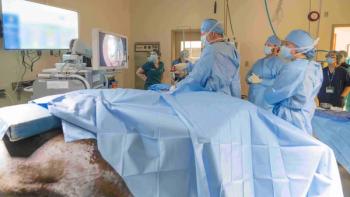
Idea Exchange: Performing diagnostic peritoneal lavage by fenestrating a catheter
Commercial peritoneal dialysis catheters work well, but over-the-needle catheters can be fenestrated and used with good results for a diagnostic peritoneal lavage.
Commercial peritoneal dialysis catheters work well, but over-the-needle catheters can be fenestrated and used with good results for a diagnostic peritoneal lavage. Using a peritoneal dialysis catheter for abdominocentesis alone without lavage has been shown to detect 1 to 4.4 ml of abdominal fluid/kg body weight.1 The peritoneal dialysis catheter's larger diameter and multiple side holes make occlusion with omentum or bowel less likely. Using a 14-or 16-ga over-the-needle catheter with fenestrations can increase the surface area for drainage. The fenestrations should be small and smooth and placed manually in a sterile manner by using a No. 10 scalpel blade. To avoid weakening the catheter's integrity, don't create too many fenestrations or place them opposite each other on the catheter.
For the procedure, place the patient in left lateral recumbency, and use sedatives and analgesics for patient comfort and restraint. Prepare the ventral abdomen with a wide surgical clip and an aseptic scrub centered on the umbilicus. Advance the fenestrated, over-the-needle catheter completely off the stylet once the tip has penetrated the peritoneal cavity. Attach a syringe to the catheter to obtain a sample. If no peritoneal fluid is obtained, infuse 22 ml/kg of warm, sterile 0.9% sodium chloride solution by gravity through a drip set attached to the catheter. To distribute the saline solution throughout the abdomen, gently massage the abdomen or roll the patient without dislodging the catheter. Either attach a syringe and gently aspirate fluid from the catheter or allow gravity to fill the drip set and fluid bag. Usually, only small volumes of fluid are obtained because of the wide dispersion throughout the abdomen. Submit any fluid obtained for biochemical and cytologic evaluation, including culture and antimicrobial sensitivity testing.
Dr. Karl E. Jandrey, DVECC
Davis, Calif.
REFERENCE
1. Kolata RJ. Diagnostic abdominal paracentesis and lavage: experimental and clinical evaluations in the dog. J Am Vet Med Assoc 1976;168:697-699.
Newsletter
From exam room tips to practice management insights, get trusted veterinary news delivered straight to your inbox—subscribe to dvm360.




